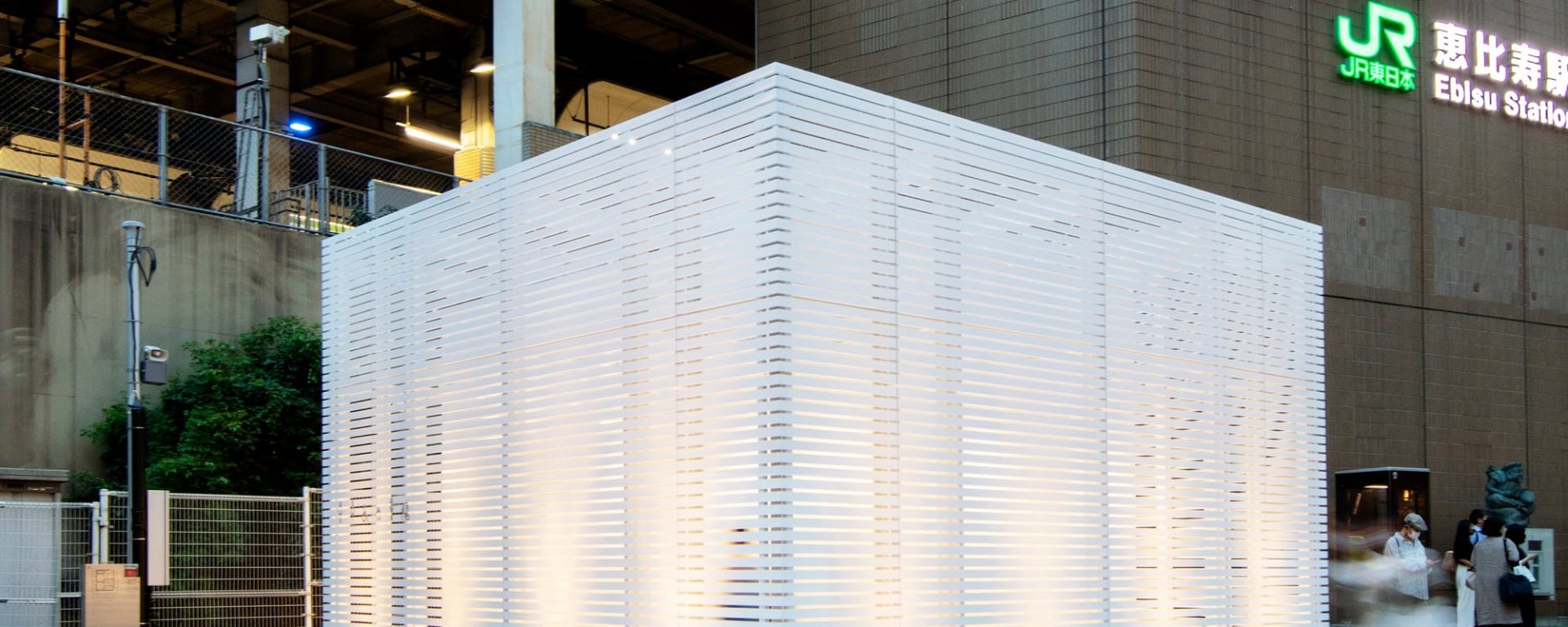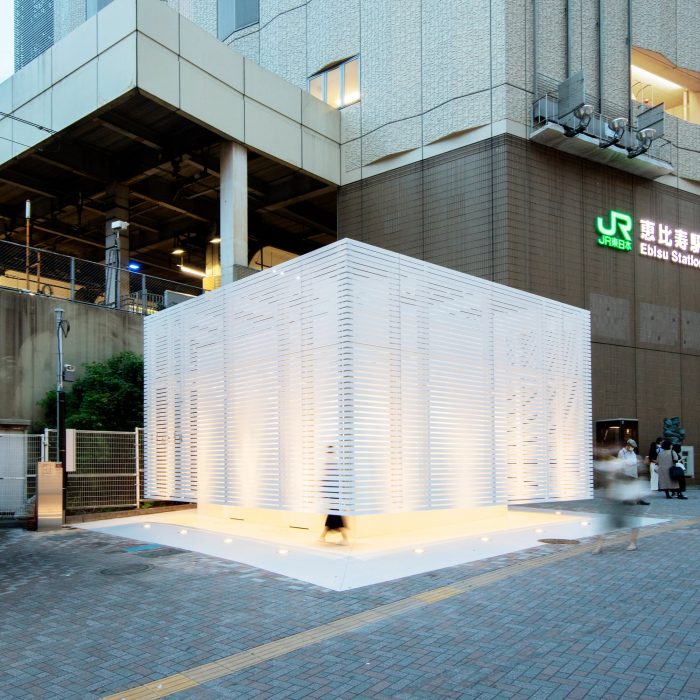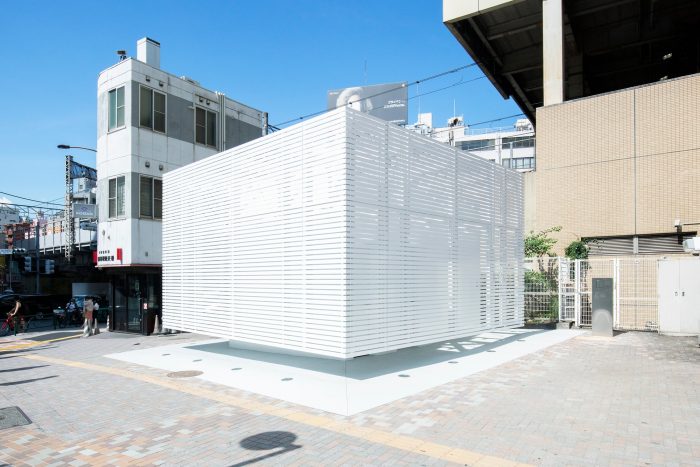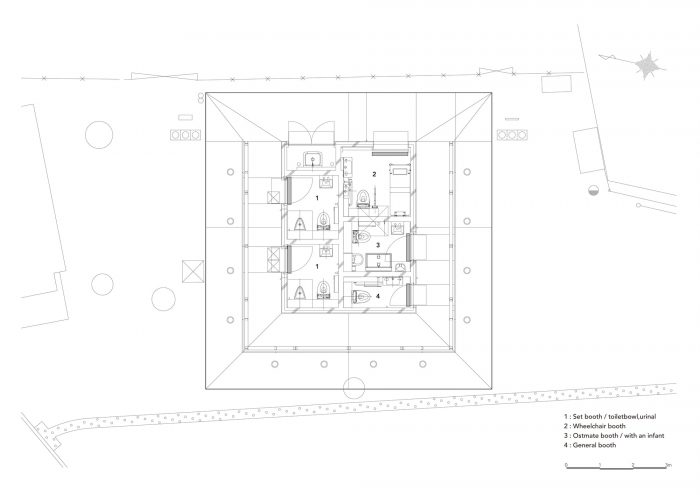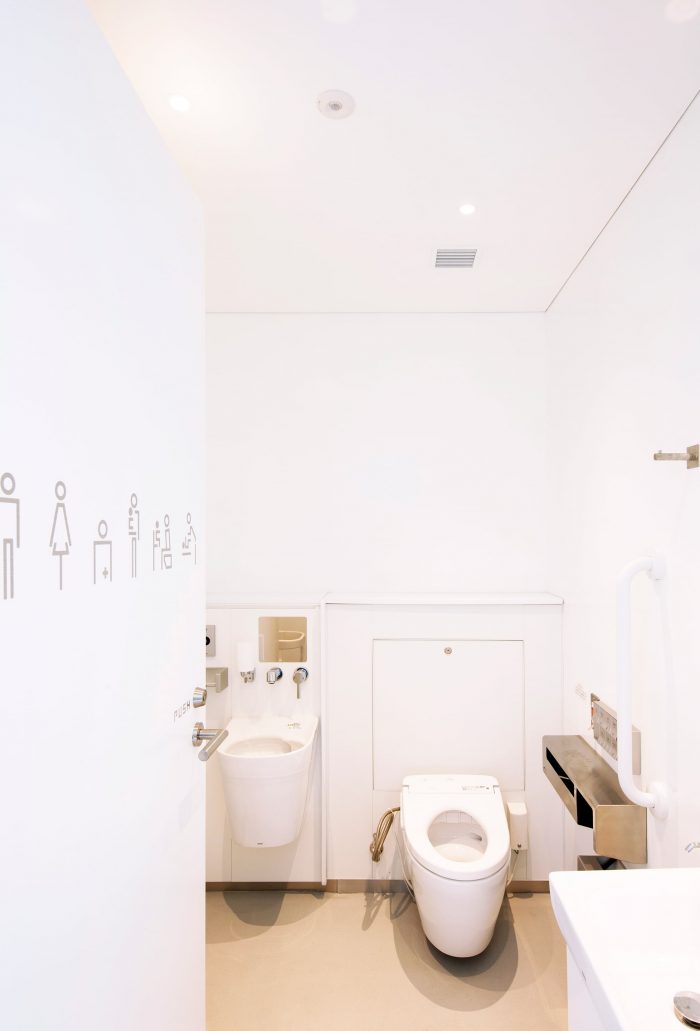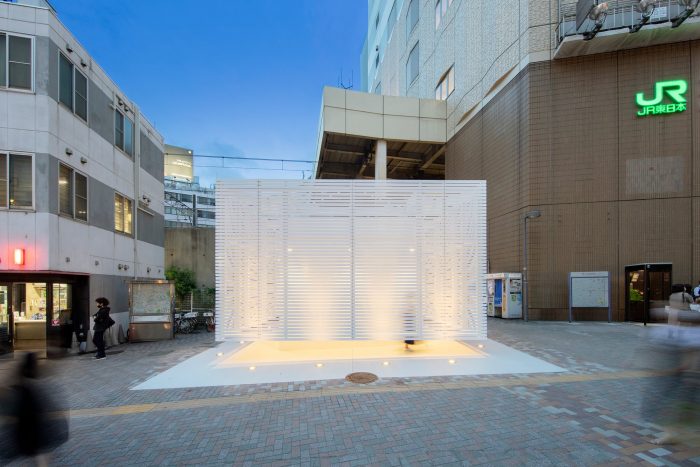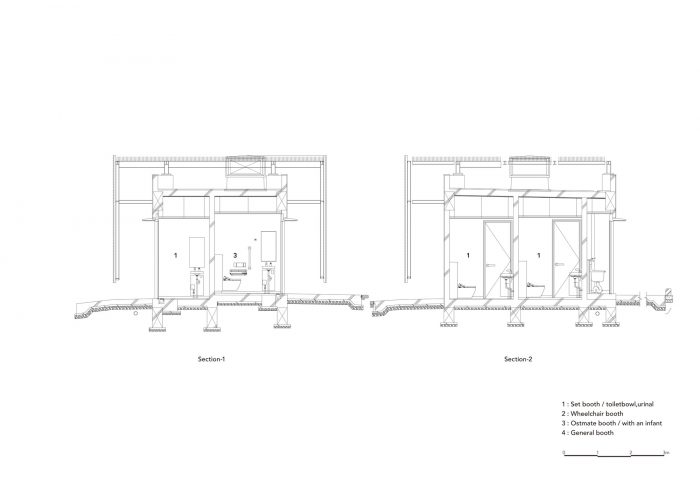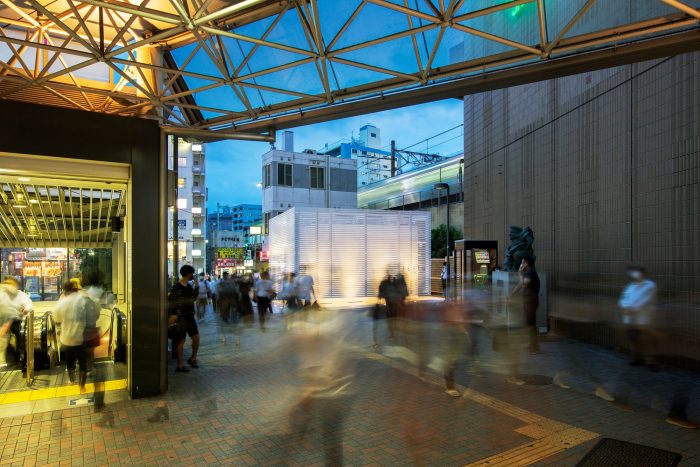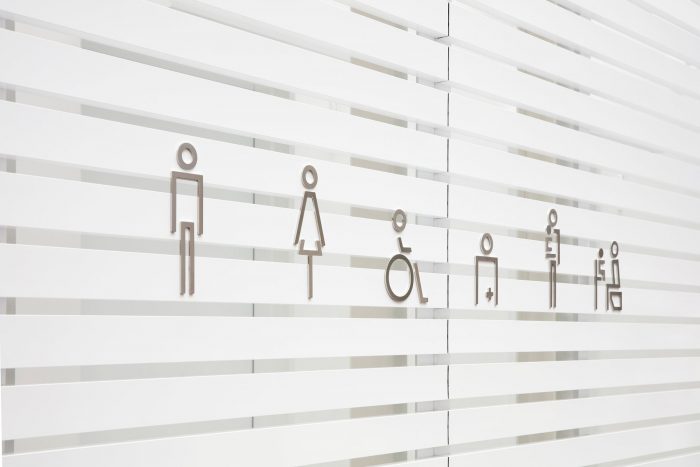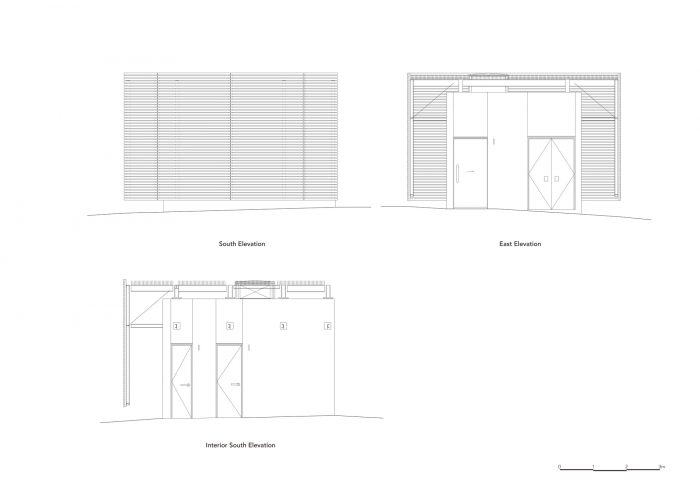作为 “THE TOKYO TOILET “项目的一部分,柏木主导了位于惠比寿站西口外的新厕所的空间设计,以及为该项目设计的所有厕所所使用的象形图。惠比寿站是JR和地铁线路的换乘站。它的西面出口是公共汽车总站和出租车站的位置,使它成为一个受欢迎的聚会地点和人流量大的区域。这个厕所被设计成出口外的一个可识别的地标,为该地区带来明亮和清新的气氛,同时对每天的通勤者保持不显眼。
As part of “THE TOKYO TOILET” Project, Kashiwa led the spatial design of a new restroom located outside the west entrance of Ebisu Station, as well as the pictograms used in all the restrooms designed for this project. Ebisu Station is a transfer station for the JR and metro lines. Its west exit is the location for the bus terminal and taxi stand, making it a popular meet-up spot and an area of heavy pedestrian traffic. This restroom was designed to be a recognizable landmark outside the exit that brings a bright and refreshing atmosphere to the area while remaining unobtrusive to daily commuters.
纯白厕所 “的设计通过将其所有部件合并为白色,描绘出厕所应有的清洁度。包含四个独立隔间的方形建筑由白色铝制百叶窗制成,给人以轻快和通风的印象。这种设计通过允许适当水平的能见度进入厕所,同时确保维护厕位内使用者的隐私,从而设法促进厕所内外的安全。
The “pure white toilet” design depicts the cleanliness that is expected of toilets by consolidating all its components to the colour white. The square building that contains four individual stalls is made from white aluminum louver that gives off a light and airy impression. This design manages to promote security from both outside and inside the restroom by allowing appropriate levels of visibility into the restroom while making sure to maintain the privacy of users in the stalls.
东京厕所项目的目标是为一个清洁、安全、和谐和接受多样性的社会作出贡献。Kashiwa将这些理想掌握在自己手中,将这个公共厕所设计成车站外的一个地标,以符合公共厕所的自然标准,并展示一种新的生活方式。TOKYO TOILET项目由日本财团制作。厕所是日本世界级 “表里如一 “文化的一个重要组成部分。然而,许多公共厕所没有被人们使用,因为厕所黑暗、肮脏、发臭和可怕。
The objective of THE TOKYO TOILET Project is to contribute to a society of cleanliness, security, harmony, and acceptance of diversity. Taking these ideals into his own hands, Kashiwa designed this public restroom as a landmark outside of the station to align with the natural standards of a public restroom and to show a new way of life. THE TOKYO TOILET Project was produced by Nippon Foundation. Restrooms are an important part of Japan’s world-class ‘omotenashi’ culture. However, many public restrooms go unused by people because the restrooms are dark, dirty, smelly, and scary.
在涉谷区的合作下,该项目旨在在涉谷区的不同地点建造吸引人的厕所设施,让每个人,无论年龄、性别或残疾,都能舒适地使用。在计划的17个地点中,每个厕所都是由16个不同的世界知名建筑师和设计师之一设计的。利用这些熟练人员的设计和创造力,这个开创性的项目正因其挑战和解决围绕当今公共厕所的社会问题的努力而受到关注。
With the cooperation of the Shibuya Ward, this project aims to construct appealing restroom facilities across various locations in Shibuya Ward that everyone, regardless of age, gender, or handicaps, can comfortably use. In the 17 planned locations, each restroom is designed by one of 16 different world-renowned architects and designers. Using the power of design and creativity of these skilled individuals, this ground-breaking project is gaining notice for its endeavours to challenge and address the social issues revolving around today’s public restrooms.
Architects: SAMURAI
Area : 39 m²
Year : 2021
Photographs :Satoshi Nagare
Lighting Designer : Daiko Electric
Creative Director : Kashiwa Sato
Architect : Yoshihiro Saito
Art Director : Ko Ishikawa
Architect & Constructor : Daiwa House Industry
Client : The Nippon Foundation
City : Shibuya City
Country : Japan

